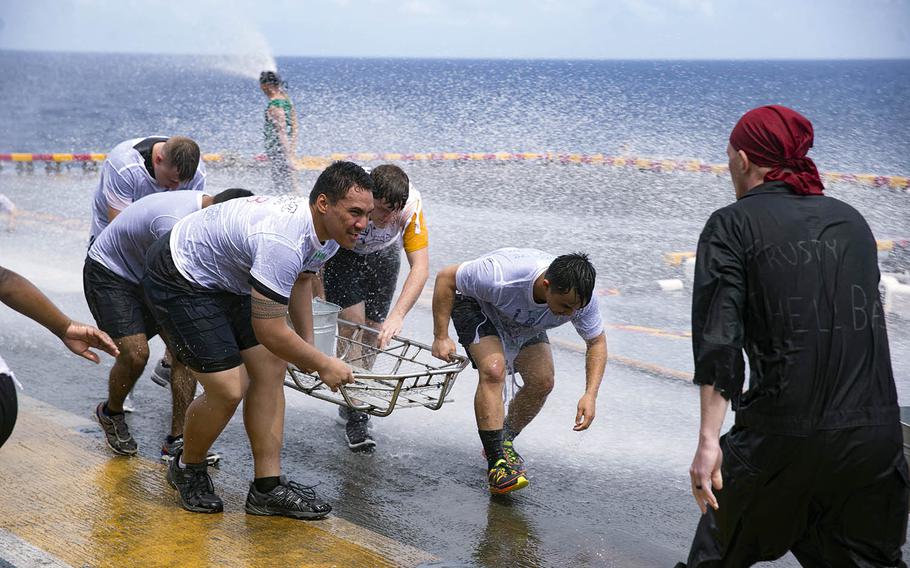
Sailors aboard the USS Wasp participate in a ceremony after crossing the equator in the Atlantic Ocean, Saturday, Nov. 25, 2017. (Sean Galbreath/U.S. Navy)
Nearly 900 “pollywogs” serving aboard the Japan-bound USS Wasp became “shellbacks” during a weekend equator-crossing ceremony in the Atlantic Ocean.
Tradition holds that as a ship approaches the equator, King Neptune takes command to rid pollywogs — those who have never crossed it before — of their horrible condition.
The vessel’s most senior shellback, who has already crossed the equator, assumes the role of Neptune — god of the sea — during the ceremony.
Master Chief Petty Officer Thomas Kriendheder, who played King Neptune on the Wasp on Saturday, said in a Navy statement that such events have changed a lot over the years.
“Our ceremony lasted 48 hours and it was more of an initiation than a camaraderie event,” said Kriendheder of when he first crossed the equator in 1993.
By contrast, pollywogs on the Wasp completed a series of mental and physical challenges, led by the ship’s 137 shellbacks. Afterward, the pollywogs were summoned by the king and his royal court and “cleansed of their slime” to become shellbacks, the statement said.
“It was a cool experience,” Airman Apprentice Skyler Senteno said in the statement. “I was skeptical at first. But there were a lot more events than I thought and I really enjoyed it. It was an honor to be part of the tradition and become a shellback.”
The Wasp is heading to Sasebo, Japan, where it will replace the USS Bonhomme Richard as the forward-deployed flagship of 7th Fleet’s amphibious forces. The Wasp’s deployment to its new homeport in the Pacific was delayed earlier this fall as it assisted in hurricane relief efforts in the Caribbean.
cook.leon@stripes.com Twitter: @LeonCook12